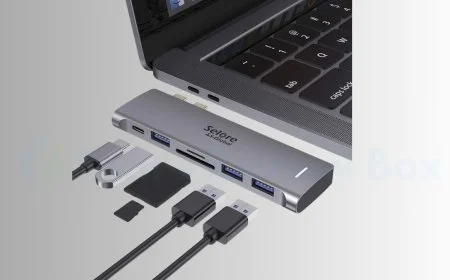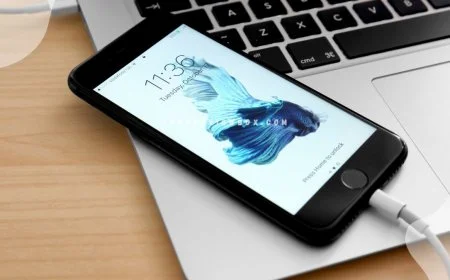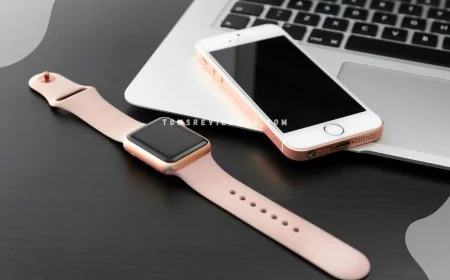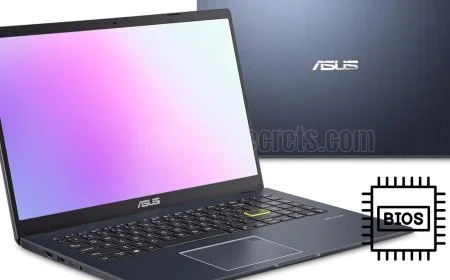How to Power On ASUS Laptop Without Using the Power Button?
Learn how to turn on your ASUS laptop without the power button using simple methods, ensuring a hassle-free startup every time.
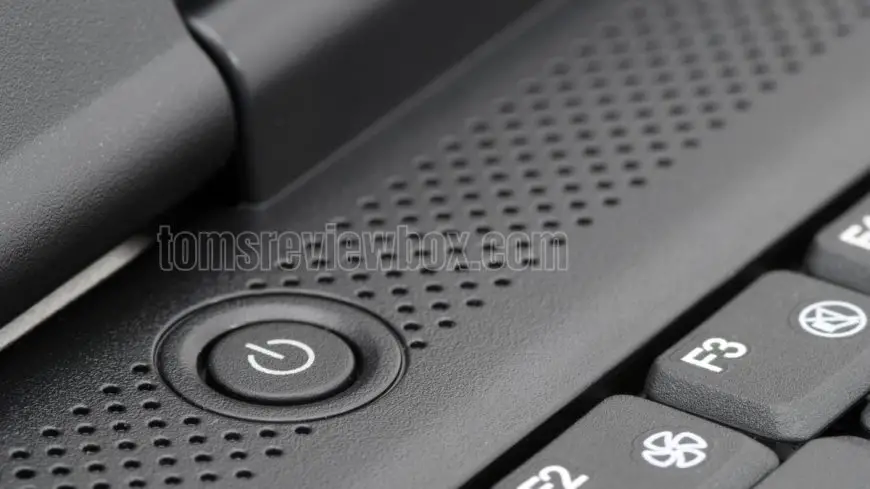
Key Takeaways
- Bypassing the power button saves the switch from unnecessary damage, fix hardware problems, or provides a workaround for buttons that don’t respond.
- Broken power buttons usually occur due to physical damage, internal malfunctions, or software conflicts.
- When broken power buttons prevent you from doing normal tasks like work or school, finding other ways to reach your laptop becomes vital.
- Other more complicated methods are using an external keyboard, enabling Wake on LAN, changing BIOS settings, or powering on pads.
- Tricks such as doing a battery reset or activating auto power-on with a wall outlet can go a long way as easy fixes.
- If troubleshooting doesn’t work, bring your device to a professional repair service or contact the manufacturer to have them repair the laptop.
At times, you may not be able to start your Asus laptop with the power button. Or you could simply turn on wake-on features from within the BIOS settings.
Alternatively, you can power on certain Asus laptop variants by tapping other keys. For instance, you can try pressing “Ctrl” + “Esc” with the laptop plugged into a power source. You can alternatively use the “Wake on LAN” feature. This lets you turn on the laptop remotely through network signals.
If your laptop power button is broken, you can use external devices to power it on. Either a docking station or a USB keyboard with power control will save you. The techniques differ depending on your laptop’s brand and configuration.
Refer to your user manual or Asus support page to get help! First, make sure your laptop is plugged into a known good power outlet before attempting these steps.
Why Avoid the Power Button?
We know the power button is important since you use it to turn on your laptop, but an unresponsive power button can lead to significant issues. By better understanding these risks and learning about alternatives like a backup power button or remote power options, you can spare yourself the unforeseen inconveniences of a faulty laptop.
Reasons for a Broken Power Button
Physical damage isn’t the only cause of power button failure. An unexpected fall or spill can break the button’s connection, making it stop suddenly and without warning. Internal hardware problems, like a damaged circuit board or loose connections, could stop the button from working.
Wear and tear from constant pushing can lead to button degradation on older laptops. Software conflicts, like compatibility problems with new system updates, make it unreliable. Then suddenly find yourself unable to power on your device.
Effects of a Non-Functional Button
A broken power button can be more than a hassle. It can create frustrations when you can’t access work papers, projects, or personal files when you need them the most. Trying to identify the cause becomes a process of elimination, wasting precious time and adding stress.
Dealing with the issue right away is important to getting back to productive work and not causing additional hardware wear and tear. Smart, dependable alternatives keep your laptop running with minimal interruptions.
Alternative Methods to Turn On Laptop
Here are some of the most effective methods to wake up your Asus laptop if the power button does not work. These techniques leverage external peripherals, internal configurations, or physical hardware, providing simple, dependable workarounds that get you back to work in no time.
Each laptop model will have slightly different needs. By understanding and experimenting with these alternatives, you can identify the right solution to fit your needs.
1. Use an External Keyboard
Plugging in an external keyboard can power on your laptop if it has the ‘Power On By Keyboard’ option available. This setting can most often be located in your BIOS settings under the “Power Management” section.
Once enabled, various key combinations can be used to power on the laptop. This approach works best for a temporary solution, especially if your integrated keyboard is broken.
Make sure your external keyboard will work, so that this doesn’t trip you up.
2. Enable Wake-on-LAN Feature
Wake-on-LAN functionality lets you turn on your laptop even from a distance. This feature is installed by default on around 70% of laptops.
If yours isn’t enabled, you may need to enable it in the BIOS settings. Set up your network to send a wake signal, and don’t forget to keep your laptop plugged into a power source.
This is very convenient for users who value the ability to access your service remotely.
3. Adjust BIOS Power Settings
Bios settings will sometimes allow you to set it to turn on automatically under certain conditions, like when AC power is connected. Setting an auto boot makes a busy day a little easier by automatically turning your laptop on at the same time every day.
Take notes so you can repeat the successful steps later and keep an eye out for performance shifts.
4. Locate and Activate Power-On Pads
If all else fails, power-on pads directly on the motherboard can serve as a last resort. Using a good conductor such as the end of a screwdriver, carefully bridge the two pads to power on the laptop.
Be especially careful when handling internal components to prevent damage, as this method is more of a permanent fix.
5. Execute the Battery Reset Technique
Removing the laptop battery and power adapter resets the laptop system. After a few minutes, re-plug it in, and try to turn the laptop back on.
This method is useful if the power button is permanently stuck but it does need the battery to be at least somewhat charged to function.
6. Start Laptop Using Clock Battery
Removing and reinserting the laptop clock battery resets all power settings. Once the charger is reconnected, see if the laptop comes on.
This technique can occasionally fix more serious system problems preventing bootup.
7. Power On with Wall Socket
You can avoid the power button issue by plugging the laptop into a wall outlet. Simply turn on the auto power-on feature in the BIOS!
Check power adapter is working properly before trying this method. It’s especially well-suited for laptops that are stationary.
Step-by-Step Instructions for Each Method
If your ASUS laptop power button doesn’t work, here are several alternative methods that can help you turn on your laptop.
Read on, where we break down step-by-step instructions for each method, focusing on the most accessible and most reliable solutions.
Read on to help pinpoint which route will work for you.
1. Set Up an External Keyboard
- Attach the external keyboard via USB or Bluetooth.
- In BIOS, go to Power Management, then enable the "Power on By Keyboard" option.
- Depending on the laptop model, you may need to use a specific key combination (usually Fn + some key) to power it on.
- Test by powering down and rebooting the laptop using the keyboard.
2. Configure Wake-on-LAN in BIOS
- Tap F2, F10, or Del on boot to enter BIOS.
- Enable Wake-on-LAN in Power Management settings.
- Save and exit BIOS, then wake up via LAN with a magic packet.
3. Modify BIOS Settings for Auto Power-On
- Access BIOS and locate the Auto Power-On feature.
- Enable settings for powering on when connected to AC.
- Upload changes and test the operation by connecting to an AC mains outlet.
4. Identify and Use Power-On Pads Safely
- Find the power-on pads with your device’s manual or online.
- Use a non-conductive tool and safely short pins 1 and 3 together.
- Always unplug the laptop before attempting.
5. Perform the Battery Reset Method
- Take out the battery and adapter, then press the power button down for 20 seconds.
- Reattach the battery and test powering on the laptop.
6. Reinsert the Clock Battery Correctly
- Remove the CMOS battery, wait a few minutes, then reinsert it.
- Plug in the charger, and see if the laptop turns on.
7. Use a Wall Socket to Power On
- Plug the laptop into a secure wall socket connection.
- Observe indicator lights and attempt alternative methods if needed.
Troubleshooting Tips for Non-Working Solutions
If your ASUS laptop is not turning on with the power button, don’t panic. By troubleshooting these common issues, such as a faulty power button or a software issue, you can figure out what’s not working and how to fix it. Here are some step-by-step instructions to troubleshoot the problem and find a better solution.
Check Laptop’s Power Supply and Connections
Check the external power adapter for any signs of wear, such as frayed wires or broken casing.
Check that all cable connections are securely connected and clear of dust or debris.
Try the wall outlet with a different device, like a phone charger, to make sure the outlet is functioning.
Take note of anything strange you notice, like if the adapter port feels loose or if the power delivery is inconsistent.
Ensure BIOS Settings Are Properly Configured
Enter the BIOS menu by pressing the designated key during startup (usually F2 or DEL).
Examine power management options, activating features such as "Power on by AC" or "Wake-on-LAN.
Save changes, exit BIOS, and check if the laptop powers on.
Keep track of any BIOS changes you make so that you can revert them if necessary.
Verify Wake-on-LAN Network Setup
Make sure Wake-on-LAN is enabled in the BIOS and check network settings on your router.
Troubleshoot Ethernet connection stability, including requirements for supporting this feature.
Use a 3rd device on the LAN to send wake-on-LAN signal to the laptop.
Document any errors or obstacles encountered during this process.
Test External Devices for Compatibility
Test with non-OEM devices, like USB keyboard with "Power On" function.
Just make sure that the device is compatible with your laptop model before you test.
Take detailed notes on every device, including what methods were successful, what methods were unsuccessful.
If all fail, try a different device, or consult a pro.
When to Seek Professional Assistance
Addressing a non-functional power button on an ASUS laptop can involve anything from basic workarounds to advanced technical repairs. Understanding when it’s time to call in a pro is key. This is particularly so if the malfunction is beyond your comfort zone or technical expertise.
Here’s how to read the writing on the wall—and avoid a disaster by seeking professional help before making costly mistakes.
Assess the Severity of the Power Button Issue
Start by figuring out what the actual issue is. Is the button physically broken, non-responsive, or does the laptop not turn on at all? If it’s connected to internal parts such as the motherboard or RAM, you may need expert assistance.
Experts ascribe about 80% of these problems to one of three key hardware components. For instance, testing the RAM module with a functional replacement will quickly rule out the cause. If the issue is further down, such as the motherboard, repairs may be more complicated.
Consider Complexity and Comfort Level
Fixing the internal parts usually needs professional equipment and expertise as well. If you don’t know how to reset a BIOS password or utilize external tools such as Depicus for diagnosing network issues, don’t be afraid to seek assistance.
Getting the right help can make all the difference. It’s not only switching on the device, remember, it’s making sure the data works and is used.
Evaluate Costs vs. Benefits
Weigh how much the repair would cost against the value of fixing the problem. RAM module replacements are fairly inexpensive, but the same can’t be said for a motherboard repair.
Consider how essential the device is for everyday tasks to determine whether getting professional repair is worth it.
Document Your Efforts
Before you call a tech, have a complete history of what you’ve tried to resolve the issue. For instance, mention if you’ve attempted to reset the BIOS or if you’ve tested other power options.
This knowledge enables professionals to more quickly and accurately pinpoint the issue.
Contact a Certified Technician
Look up local certified technicians or repair services that focus on laptop repair. Write down step-by-step notes on the power button issue and previous attempted troubleshooting.
Make an appointment for an official diagnosis to take place and keep a log of all correspondence, diagnosis, and repairs on hand for your use.
Consult the Manufacturer for Repairs
If your laptop is still under warranty, contact ASUS customer support. Ask them how to get it repaired and they’ll give you step-by-step instructions on how to ship the device in.
Keep a record of correspondence to maintain a high level of transparency and accountability at every stage.
Conclusion
It may seem difficult to turn on your ASUS laptop without the power button, but it’s really easy. There are lots of simple ways to inspire you to take that first step. From employing wake-on features to testing external keyboards, you have sound solutions that remove the need for deep tech knowhow. These alternatives provide convenience and maximize time so you can keep your laptop up and running without any unexpected delays.
If none of these do the trick, it may be time to reach out to a pro. Failing to address underlying problems might mean more expensive repairs or more costly downtime in the future.
Based on the above information, start with the steps that most apply to your situation. Being patient and methodical with each approach usually will result in a happy ending. If you found this step by step guide helpful, be sure to spread the word so others who are dealing with the same problem can benefit!
Frequently Asked Questions
Why should I avoid using the power button on my ASUS laptop?
Regularly pressing the power button can lead to a faulty power button over time. If it’s too late, exploring other options can help avoid future accidents and reduce repair costs.
Can I turn on my ASUS laptop using the keyboard?
Indeed, you can power on most ASUS notebooks from the keyboard by using the new power button feature. To utilize this option, just turn on the "Wake on keyboard" setting from BIOS recovery.
What is the easiest way to turn on an ASUS laptop without the power button?
Using an external keyboard or a remote power solution like wake-on-LAN are two of the easiest tricks to replace a faulty power button.
How do I access the BIOS to enable alternative startup methods?
Reboot your laptop and hit the F2 or Del key repeatedly on boot to access the BIOS menu, allowing you to adjust the power management settings and troubleshoot any faulty power button issues.
What if none of the alternative methods work?
If none of the solutions work, that indicates a potential hardware issue. It’s advisable to take your device to an ASUS-authorized repair center for a complete diagnosis and service.
Can I damage my laptop by attempting these methods?
No, these methods are dangerous when properly executed, their use is entirely safe. External peripherals are not an issue, but incorrect handling of internal components or BIOS settings can create major problems, so always tread carefully.
When should I seek professional assistance?
Seek help if the laptop doesn’t respond to any alternative methods, like the battery trick, or if you’re uncomfortable handling BIOS settings or internal hardware issues.
What's Your Reaction?







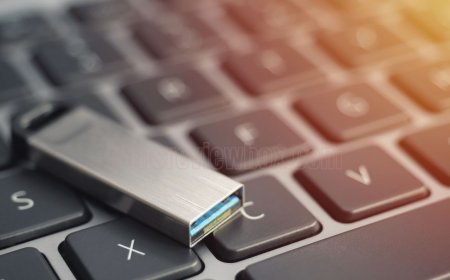
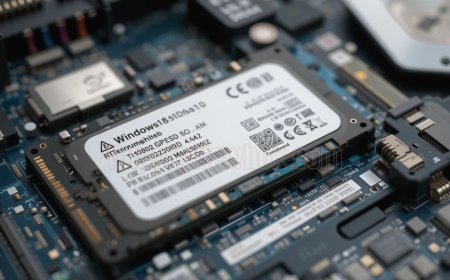

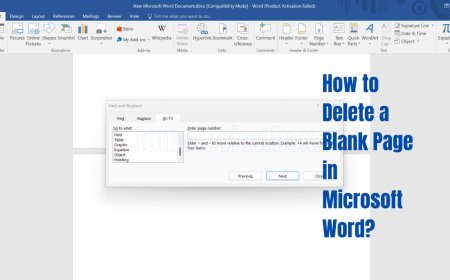









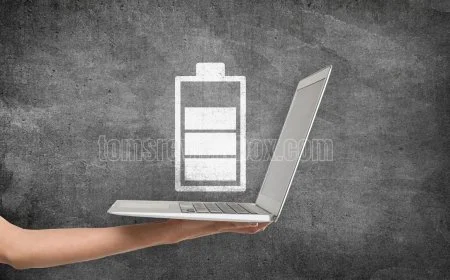



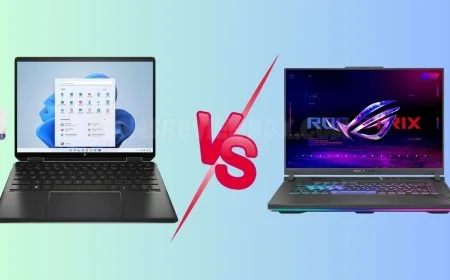


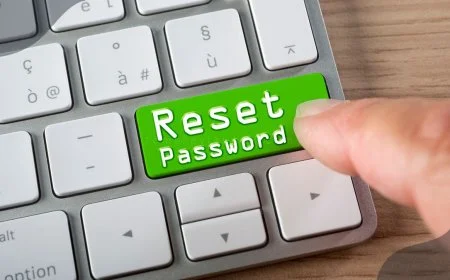




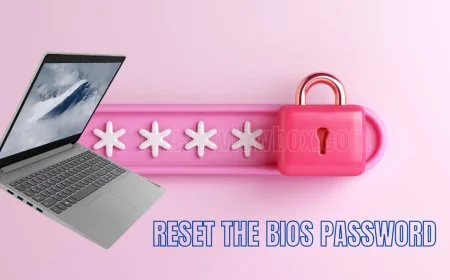

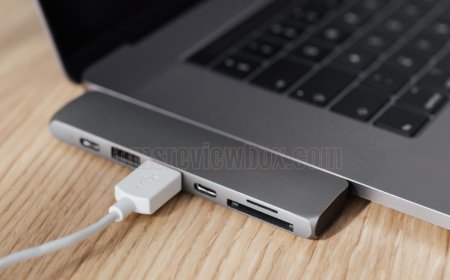




![MacBook Pro M5: All the features and specs you need to know [LEAKS REVEALED]](https://tomsreviewbox.com/uploads/images/202502/image_430x256_67bd6d7cd7562.jpg)
